Removal Procedure
Tools Required
| • | J 43602 HPL Crowfoot |
| • | J 45878 Combustible Gas Detector |
- Relieve the CNG fuel system line pressure. Refer to Fuel Pressure Relief .
- Disconnect the negative battery cable. Refer to Battery Negative Cable Disconnection and Connection in Engine Electrical in the J Platform Service Manual.
- Remove the fuel tank cover. Refer to Fuel Tank Cover Replacement .
- Venting natural gas is no longer audible from the vent stack.
- Close the J 42435-B ¼-turn valve and stabilize the fuel tank and line assembly at a temperature greater than 7°C (45°F) for at least 4 hours.
- The J 42435-B pressure gauge indicates 0 kPa (0 psi).
- Vent the internal CNG fuel pressure from the tank. Refer to Fuel Tank Venting .
- Remove the vent hose (6) from the high pressure lock-off (HPL).
- Remove the fuel line fittings and discard the O-rings.
- Remove the manual vent tool.
- Disconnect the pressure relief device (PRD) outlet line (4).
- Remove the PRD line fitting (4).
- Remove the HPL electrical connector bracket stand-offs.
- With the J 43602 HPL crowfoot removal tool, loosen the HPL.
- Remove the HPL from the CNG fuel tank and discard the HPL and O-ring.
- If fuel contamination is suspected remove and clean the CNG tank prior to installing the new HPL. Refer to Fuel Tank Replacement and Fuel Tank Cleaning .
Caution: Do not install this part if you can not completely refill the vehicle with CNG after a repair. Failure to properly leak-check the system after the part replacement may result in serious injury, death, or damage to the vehicle or the part.
Caution: Always use the J 42435-B Compressed Natural Gas (CNG) Fuel Tank Venting Kit in conjunction with the General Motors approved Fuel Tank Venting service procedure to vent CNG fuel tanks. Failure to use the J 42435-B and follow the approved Fuel Tank Venting procedure could result in death, serious injury or vehicle and component damage.
The J 42435-B is required for the following reasons:| • | Natural gas fuel vapor can also contain water vapor. |
| • | The pressure drop associated with venting high pressure gaseous fuel can cause fuel vapor, tank and line temperatures to reach -73°C (-100°F) or colder. |
| • | The below freezing temperature can cause the water vapor to freeze |
| • | The J 42435-B vent hose contains an orifice which is intended to freeze before the CNG high pressure lock-off (HPL) tank valve freezes. |
| • | The J 42435-B pressure gauge can indicate a restricted orifice if fuel flow ceases. |
| • | Internal fuel tank ice build-up may result when venting the CNG fuel tank without the J 42435-B. |
| - | Internal fuel tank ice build-up can completely restrict the venting of fuel. |
| - | Venting may cease indefinitely depending upon ambient temperature conditions. |
| - | The ceasing of fuel tank venting may falsely indicate that the fuel tank pressure has been completely vented. |
| - | CNG fuel tanks with exceptionally high water content are suceptible to internal fuel tank ice build-up even with the use of the J 42435-B. |
| If the ambient temperature is less than 7°C (45°F), warm the fuel tank and vent line assembly manually, either with warm water or by placing the tank and line assembly into a warm environment. |
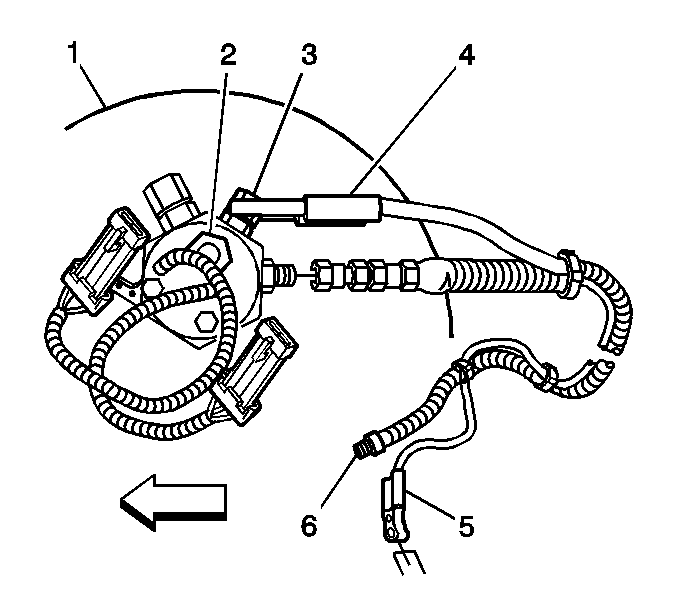
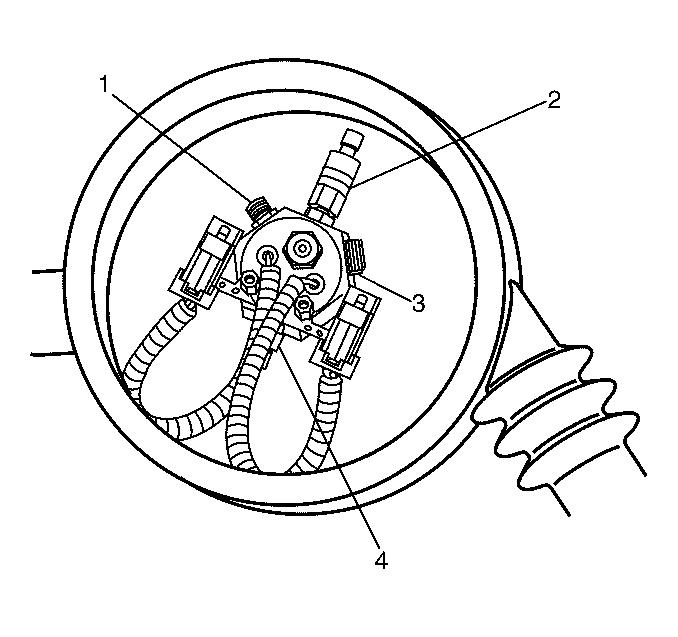

Installation Procedure
- Install the new O-ring on the HPL.
- Lubricate the O-ring with petroleum jelly.
- Ensure that the O-ring mating surface of the tank is clean and free of debris or damage.
- Install the HPL.
- To obtain your dial reading, perform the following procedure:
- Install the HPL fill line fitting (4) with a new O-ring. Lubricate the O-ring with petroleum jelly.
- Install the HPL outlet fitting (8) with a new O-ring. Lubricate the O-ring with petroleum jelly.
- Install the HPL PRD line fitting (6) with a new O-ring. Lubricate the O-ring with petroleum jelly.
- Ensure that the lines are properly oriented to the HPL fittings. It may be necessary to rotate the CNG tank in the mounting brackets in order to obtain the proper alignment. Refer to Fuel Tank Replacement for the steps necessary to loosen the tank straps and rotate the tank.
- Connect the fuel outlet line to the HPL fitting (1) with a new O-ring face seal. Lubricate the O-ring face seal using petroleum jelly.
- Install the fuel tank pressure (FTP) sensor (2) with a new O-ring. Lubricate the O-ring with petroleum jelly.
- Connect the PRD line to the HPL fitting (4) with a new O-ring face seal. Lubricate the O-ring face seal using petroleum jelly.
- Install the HPL electrical connector stand-offs.
- Connect the fill line to the HPL fitting with a new O-ring face seal. Lubricate the O-ring face seal using petroleum jelly.
- Connect the HPL and the FTP sensor connectors.
- Begin to fill the fuel tank and with the J 45878 check the HPL O-ring for leaks at each of the following pressures:
- Connect the negative battery cable. Refer to Battery Negative Cable Disconnection and Connection in Engine Electrical in the J Platform Service Manual.
- Start the engine and use the J 45878 in order to inspect for CNG fuel system leaks at each serviced fitting.
- Install the tank vent boot cover and nuts.
- Install the fuel tank cover. Refer to Fuel Tank Cover Replacement .
Caution: Natural gas is stored under high pressure. If a leak occurs, the high pressure could cause a personal injury. In order to prevent Compressed Natural Gas (CNG) fuel leaks, always replace the CNG fuel system O-rings during service.
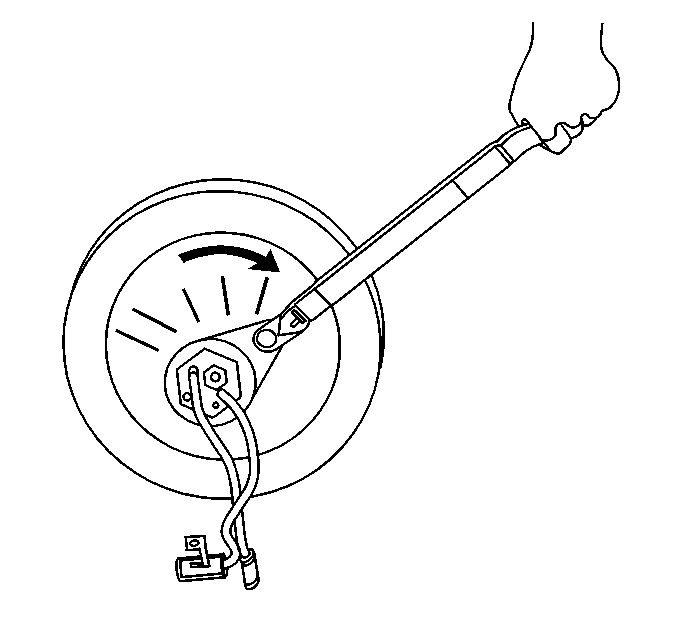
Tighten
Tighten the HPL to a nominal torque of 305 N·m (225 lb ft) at 0 degrees. You must compensate for the torque wrench and the HPL crowfoot offset. Refer to the formula below for compensation of your torque
wrench.
Important: Ensure that the J 43602 is straight (0 degrees) on the torque wrench.
| 5.1. | Multiply your torque wrench length in inches by 305. |
18 inch torque wrench example: 18 X 305 = 5490.
| 5.2. | Add 3 to the length of your torque wrench. |
18 inch torque wrench example: 18 + 3 = 21.
| 5.3. | Divide the first value obtained by the second value obtained. The result indicates the amount of torque your wrench should tighten the HPL to. |
18 inch torque wrench example: 5490 divided by 21 = 261.4.
For an 18 inch long torque wrench tighten the HPL to 261.4 N·m.
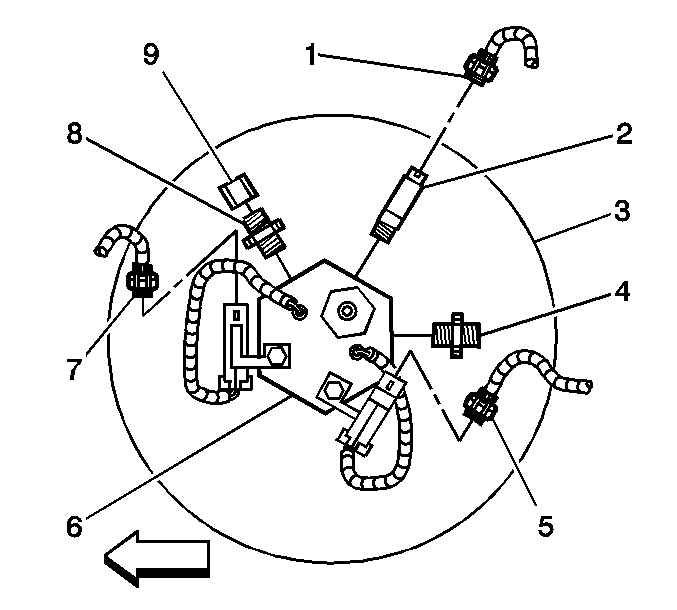
The fill line fitting has the larger thread diameter in order to accept the fill line.
Tighten
Tighten the fitting to 48 N·m (35 lb ft).
Tighten
Tighten the fitting to 48 N·m (35 lb ft).
Tighten
Tighten the fitting to 48 N·m (35 lb ft).
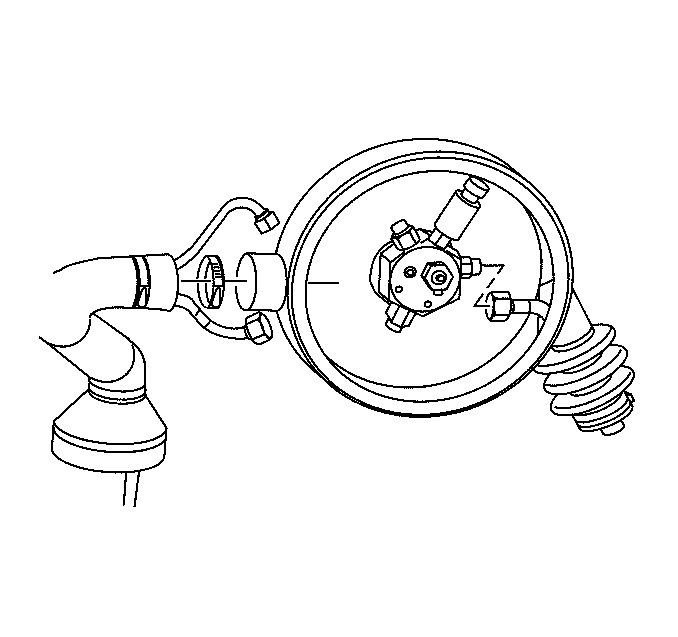

Tighten
Tighten the fitting to 37 N·m (27 lb ft).
Tighten
Tighten the sensor to 27 N·m (20 lb ft).
Tighten
Tighten the fitting to 37 N·m (27 lb ft).
Tighten
Tighten the stand-offs to 12 N·m (106 lb in).
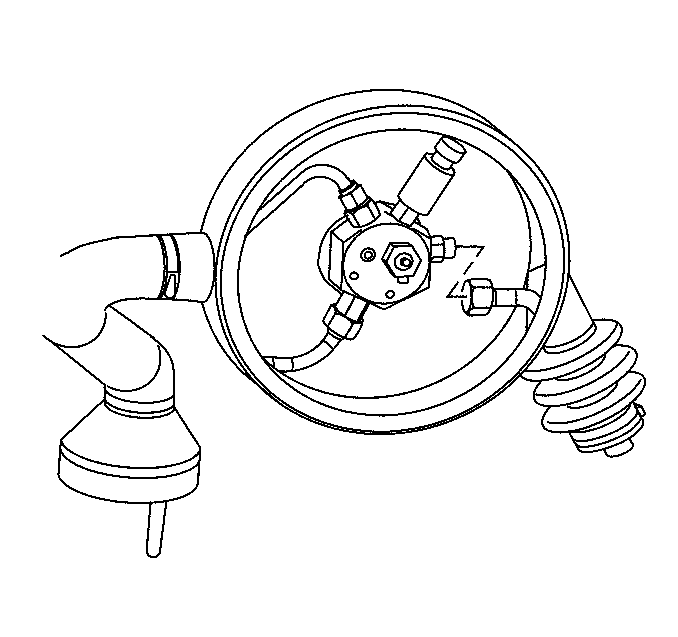
Tighten
Tighten the fitting to 37 N·m (27 lb ft).
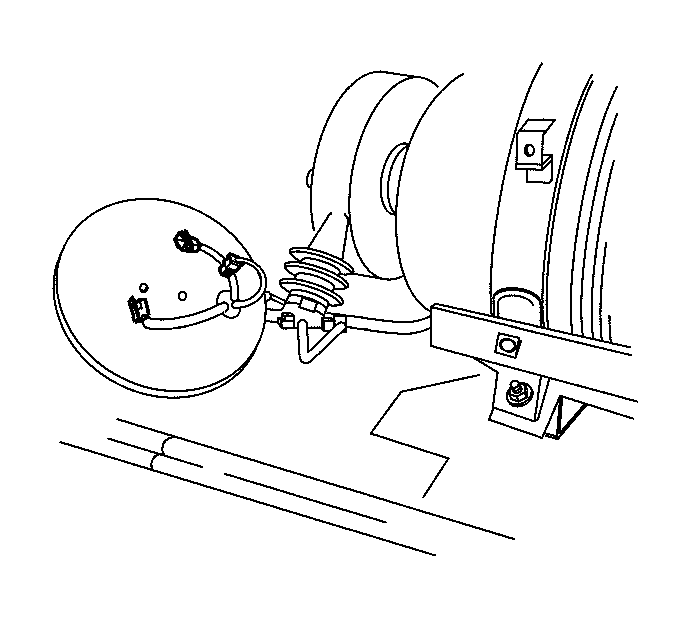
Caution: The high pressure lock-off solenoid seal is more likely to leak at a lower fuel pressure. Always perform the fuel leak procedure exactly as specified. Failure to follow the proper procedures may result in serious injury or damage to the vehicle or part.
| 16.1. | 500 psi (3447 kPa) |
| 16.2. | 1500 psi (10342 kPa) |
| 16.3. | 3000 psi (20684 kPa) |
Tighten
Tighten the nuts to 6 N·m (54 lb in).
